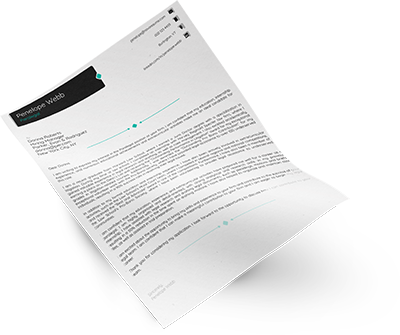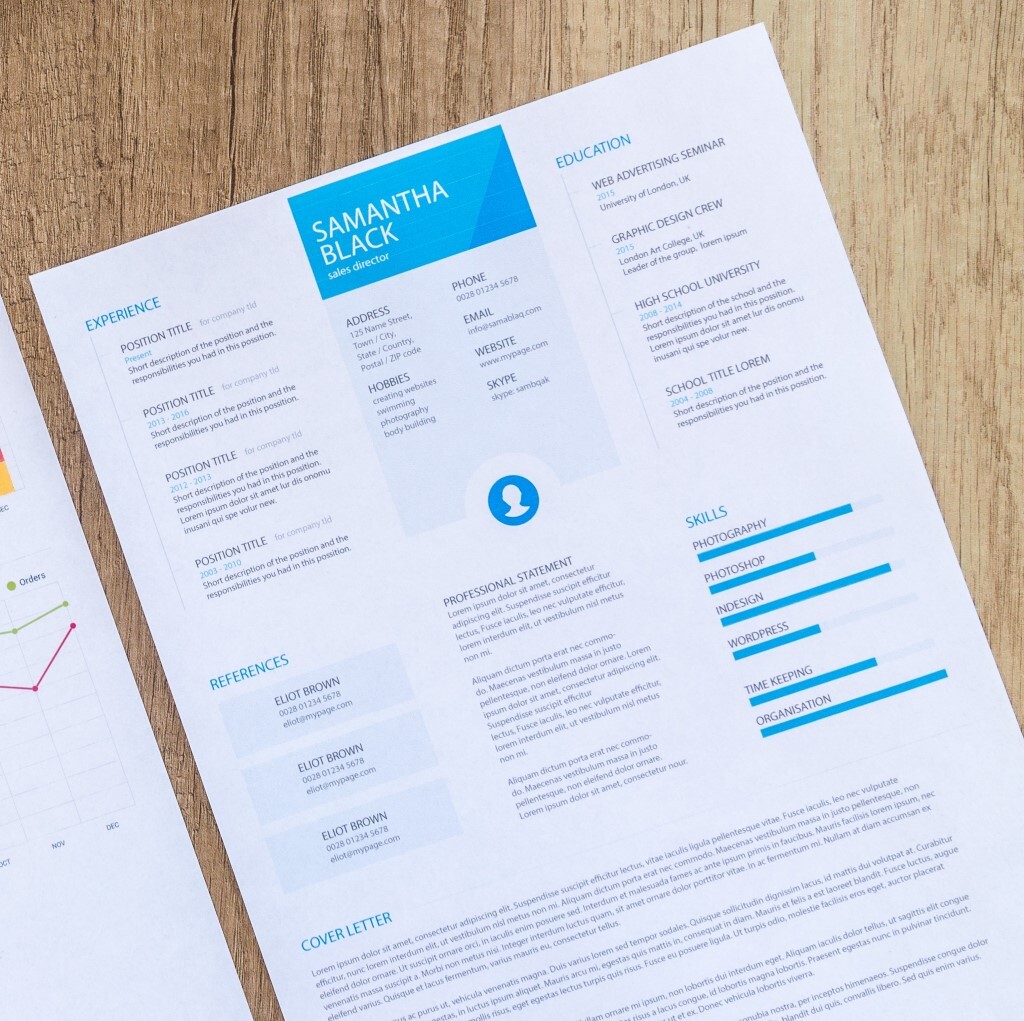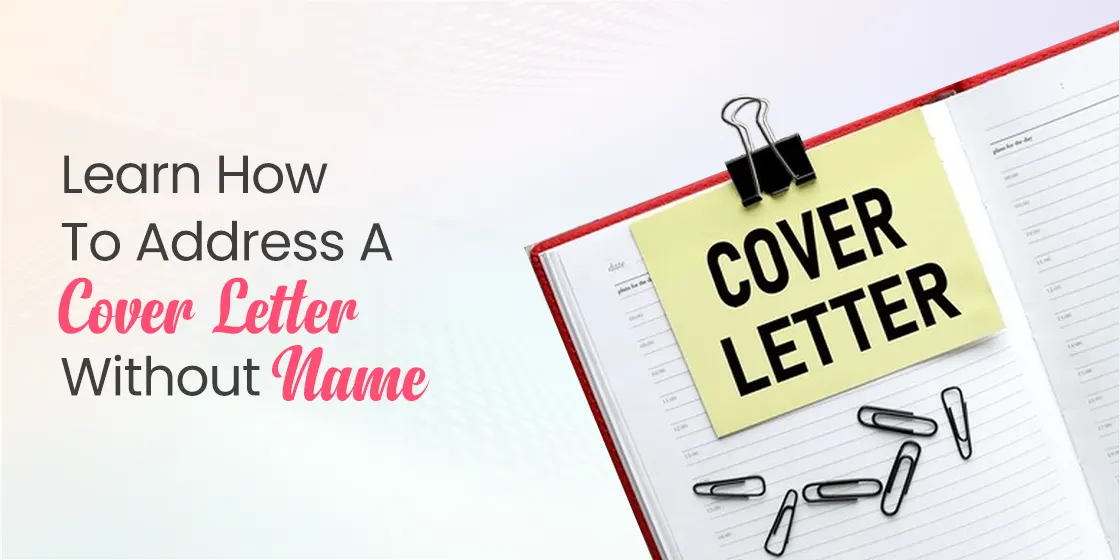Learn What to Include in a Cover Letter When Applying for a Job
Cover letters are your first interaction with a hiring manager, so ensuring to make a good first impression can massively increase your chances of landing your dream job. Of course, not all hiring managers ask for a cover letter, but it’s best if you include one with your CV.
Reason being, the benefits of cover letters, that enable you to express your keen interest in the job, and give you the opportunity to properly demonstrate how your skills match the requirements of the open position. Many job seekers realize how big of an impact a cover letter can have, that’s why we recieve a lot of projects from people who wish to leverage our cover letter writing services.

In this article, we’ll discuss everything that goes into successfully crafting a cover letter, however, for those who are not aware of what a cover letter is, let’s begin with the basics.
What is a Cover Letter?
As opposed to a resume that simply states your career achievements and educational background in the most condensed form, cover letters provide more information regarding your work experience, and brief the employer as to how you can add more value to their company.
Why are Cover Letters Important?
With a plethora of applications piling up for in-demand jobs, it can become increasingly difficult for hiring managers to shortlist the best candidates and then choose one amongst multiple shortlisted applicants.
By providing additional information on how you can add value to the company with your experience, you make a case for yourself and increase your chances of getting hired by giving the hiring manager a solid reason to choose you over another applicant with a very similar resume.
How to Start a Cover Letter?
What to include in a cover letter
Before you begin working on a cover letter, research about the company and carefully go through the entire job description to make an informed decision on whether or not you are a good fit for the job. In case you are, you have already finished half of the process that goes into designing a cover letter — making it easier for you to list all the important details that you shall include in the document. This will ensure that you do not forget anything essential that must be included in your cover letter.
When applying for a job, follow a similar cover letter formatting as:
- Your Personal information and Employer details
- A Salutation / Greeting
- Opening Paragraph
- Middle Paragraph
- Closing Paragraph
- A Professional Sign off With Your Signature
What To Include In A Cover Letter?
Having discussed how the outline of a cover letter should look like, let’s learn how to write a cover letter by taking a deep dive into the process of writing each section of the outline effectively:
Personal Information and Employer Details:
The header of your cover letter is where you add your personal information, which is followed by the date and the recipient’s contact details. Speaking of the former, you must first include your name, email address, phone number, and city for this section.
Also, in case you’re sending the letter as a mail, you should also add the mailing address, so that the recipient is able to reply back to you.
Once you’re done with your personal information, you should make sure to add the recipient’s information which typically includes their name, company, city, state, ZIP code. By the end of this section, your letter should look something like this:
Adam Sphinx
LA, California
098-01-65
AdamSphinx@mail.com
01-06-2022
Harry Williams
INK Dot Inc.
LA, California
It’s important to note that this section can often have slight variations, wherein some candidates provide their contact details in the footer. Either way, it’s correct, as long as you don’t clutter the layout.
Salutation and Greeting
If you’re unsure who will be receiving your job application, and therefore are unable to decide which gender pronoun you can write, a common and gender neutral greeting, such as something similar to “Hello.” would work best. What could be even better, however, is if you can manage to look up the hiring manager or talent acquisition officer’s real-name through Linkedin.
Examples of Cover Letter Greetings:
Hello Laurence,
Dear Hiring Manager
Opening Paragraph

The opening paragraph of your letter should mention the job title of the open position for which you’re applying. Then, simply mention a referral and state your experience in the field, so that you can increase the chances of grabbing the attention of the hiring manager.
Moreover, it is necessary to research about the company so that what you write in the opening paragraph should aptly explain why you’re interested in the role and what makes you a great fit for the job.
Example:
I’m writing to express my strong interest in the copywriting position at XYZ, Inc. My friend, Henry Reeves, who works in your company, recommended that I write to you directly regarding this position, given my four years of experience working as a senior copywriter at ABC company. I would greatly appreciate it if you could consider me for this position.
Middle Paragraph
The middle paragraph of a cover letter should focus on highlighting your past achievements as well as your educational background to prove that you have the relevant experience for the job.
Having mentioned in the opening paragraph where you worked and for how long, the middle paragraph needs to provide a detailed account of how your skills and your experience contributed to the growth of the previous employer brand.
Moreover, it is important to note that ideally you should primarily focus on including those achievements that are measurable and based on performance metrics. This would ensure the recruiter that your claims are based on facts.
As an example for writing an effective middle paragraph, refer to this sample:
My former employment at Writers Xpress afforded me a fantastic chance. I was able to change our company’s internal memo system with new terminology and wording. In addition, I helped create web and social media copy for the organization’s digital platforms. During my stay, we managed to gain a 30% increase in our clientbase due to my efforts in improving our copywriting services.
Closing Paragraph
In the closing paragraph explain why the company is as much of a good fit for you as you are for the company. Tell them what makes you so enthusiastic about working for the company. Is it that the brand’s mission, vision, culture and values are aligned with yours? If so, it gives them a good reason to seriously consider you.
That’s because often companies are able to find employees with a good skill set, however, retaining them for long could be difficult if the employee and the company do not have shared goals, and aren’t struggling for the same cause.
Example:
As a reputable company that has an international clientbase, working with XYZ (recepient’s company) would give me the opportunity to take up new challenges, allowing me to implement my copywriting and team management skills at a larger scale, for the assurance of delivering outstanding content on a consistent basis.
Grab employer’s attention with a professionally written cover letter!
Land Your Dream Job
End the Body Text with a Complimentary Close and your Signature
Once you’ve established the aforementioned, you can then make a call to action, and express how you look forward to discussing the company’s marketing objectives, so that you can make an in-person demonstration of your successes.
In doing so, you can convey in a subtle manner that you’ll be anticipating their response. However, be sure not to be too direct, as it does not leave a good impression.
Moving forward, having made the call to action, you should add a thank you note in the complimentary close, thanking the recipient in a professional manner for taking out the time to go through your cover letter. Also, make sure to maintain the formal tone, and avoid a casual closing. Finally, sign off with your signature.
Example of words that you can use for an appropriate closing:
- Sincerely
- Regards
- Respectfully
- Thank You
What Not To Include In A Cover Letter?

There are some cover letter mistakes that people commonly make while writing about them, so it’s necessary for you to avoid making these mistakes in order to increase the chances for your cover letter to stand out from all others. Some common mistakes that you can easily avoid are as follows:
Avoid Being Generic:
While hiring managers do not receive as many cover letters as they receive CVs and Resumes, the quantity of cover letters is still enough to make them feel unimpressed upon coming across the same generic sentences and phrases that most other applicants have also used.
It’s important to make your cover letter as personalized and natural as you can, so that the hiring manager does not feel as if they are interacting with a robot. Thus, make sure that you avoid saying phrases that are overused in cover letters. Some examples of these phrases are:”
- I believe
- To whom it may concern
- Go-getter
- Really/Honestly
By avoiding these mistakes your cover letter would certainly feel refreshing to the hiring manager.
Avoid Being Dishonest
It doesn’t need to be said, however, it’s best to avoid stating anything that is untrue in your cover letter. Often, in an effort to make a good impression, candidates make the mistake of lying in their resume about one thing or the other.
While it may land you a job offer, you can get into trouble if you’re asked to provide proof to support whatever claims you have made in your resume. Resultantly, you either won’t get hired, or get fired whenever the lie is caught.
Thus, it is important to ensure that everything you write in your cover letter is based on facts.
Avoid Long Paragraphs And Irrelevant Information
Candidates are often unsure and wonder how long should a cover letter be. Ideally, it should only be long enough to ensure that the cover letter does not remember a wall of text. Therefore, it’s important to avoid long paragraphs, which would make it easier for hiring managers to skim through it with ease.
The length of your paragraphs can easily be kept short if you don’t add irrelevant information in your cover letter, which is another common issue. Often, candidates give excuses for leaving their previous job, or mention how they are a good fit despite not having experience in something which is a requirement for the job.
Giving such irrelevant information does nothing but draw attention to your limitations. So, be sure to write succinctly in preference for short and crisp sentences.
Avoid Being Overwhemlingly Enthusiastic
Even if a candidate really is enthusiastic and excited to work with an employer, openly expressing their enthusiasm can have an adverse effect, making the hiring manager feel unimpressed by what they may perceive as desperation.
Moreover, another downside of overselling yourself is losing your leverage of effectively negotiating your salary.
By making sure of avoiding all these common mistakes candidates can show how unlike others, they have a keen eye that is capable of eliminating common issues that most of the other candidates fail to recognize.
To Sum It Up:
Writing a job cover letter could be a daunting task for many people. However, before you begin, remember to keep into consideration the points that we’ve discussed in this article, especially the short cover letter examples. Doing so can help you massively, even if you were writing such a letter for the first time.
FAQs
| 1. What are the 4 parts of a cover letter? A cover letter has multiple different sections: firstly, in the header you write down all your contact information, second comes the salutation or greeting, then, the body of the cover letter, before ending the letter with a complimentary closing, and a signature. |
| 2. How long is a cover letter? Cover letters should be anywhere between a half or a full page. However, they shouldn’t exceed more than one page in length. |
| 3. What are the 3 types of cover letters? Among the 3 types of cover letters, the first is the application cover letter; the second is the prospecting cover letter, and the third is the networking cover letter. |

Unleash your brand story`s potential with eContentSol – your creative writing companion. We craft narratives that captivate. Ready to elevate your content game? Dive into creativity with us and let`s bring your ideas to life.


